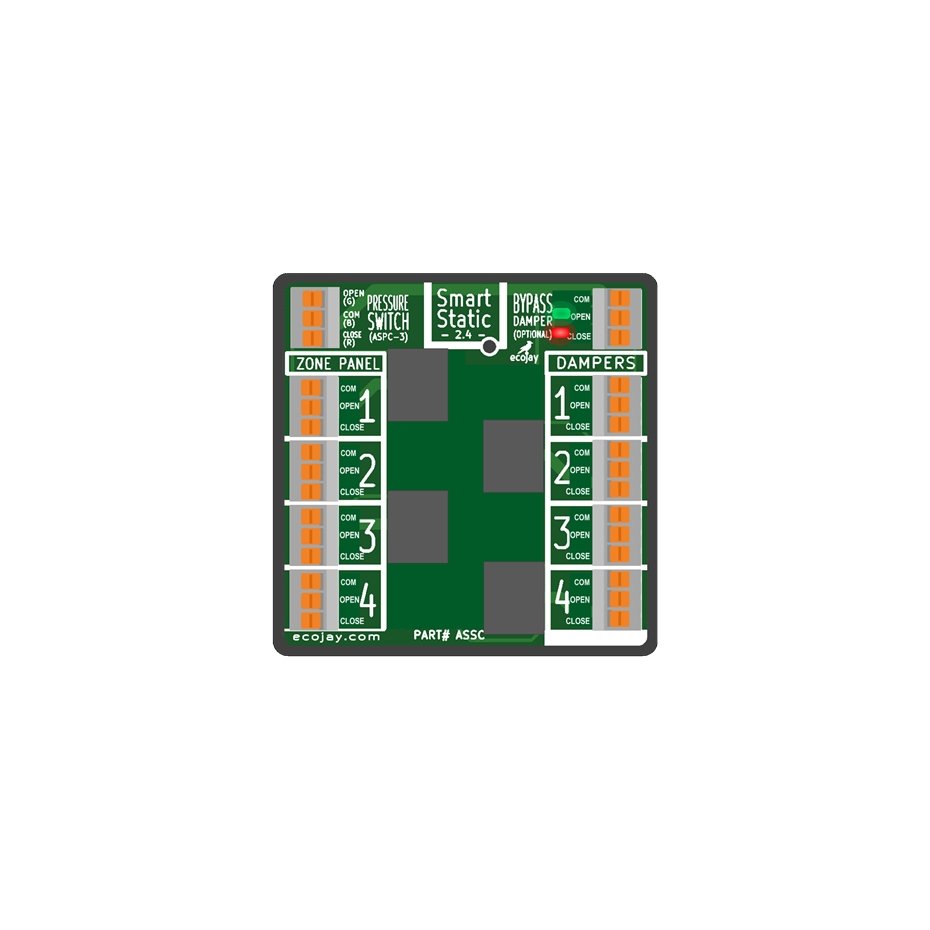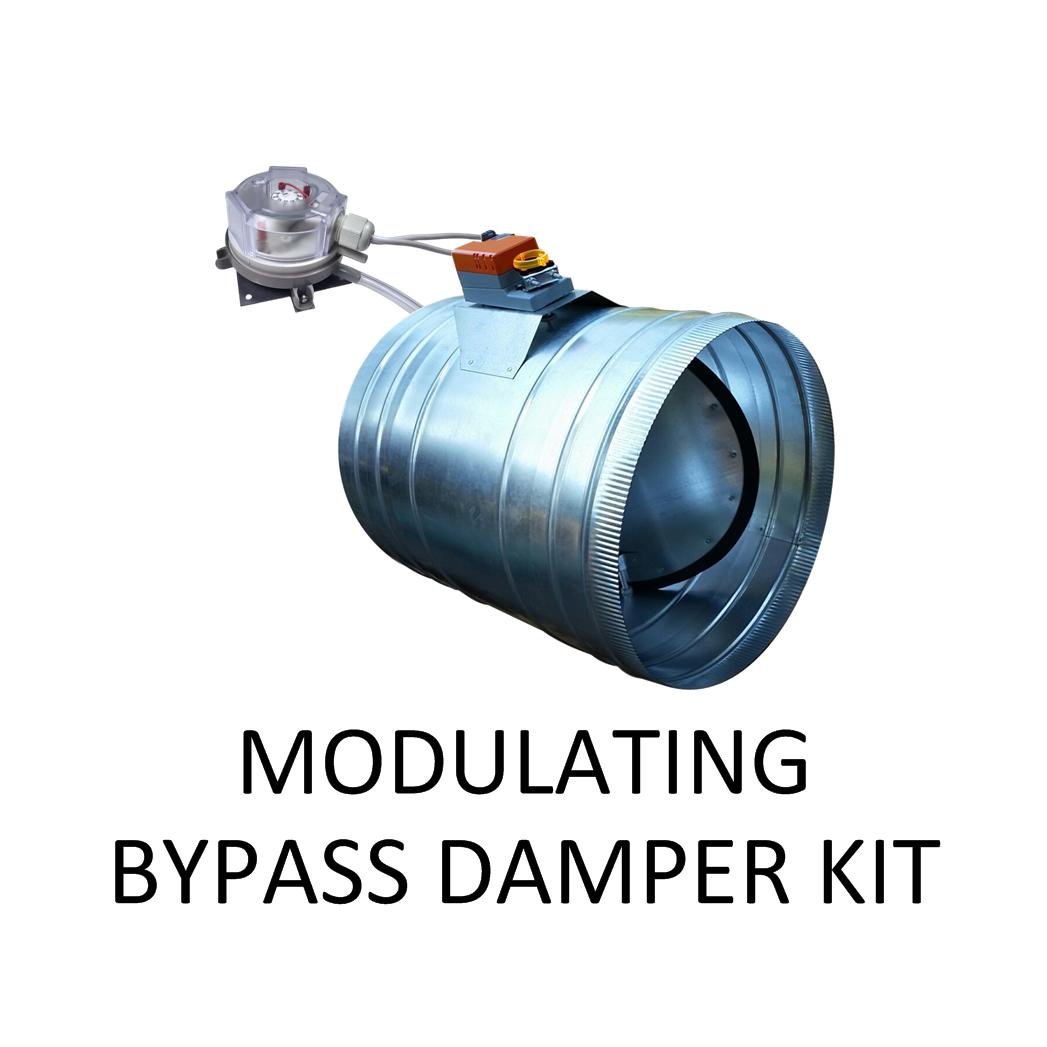Should a zoning system have a bypass damper or not?
Zone control systems have become a vital aspect of modern HVAC systems, especially in multi-room homes or commercial spaces where temperature preferences can vary significantly between areas. By allowing different parts of a building to be heated or cooled independently, zone control systems offer energy efficiency, increased comfort, and better overall control. However, one aspect of zone control systems—bypass dampers—has been a point of debate within the HVAC industry. Some argue that bypass dampers are unnecessary or even counterproductive, while others highlight their benefits in specific scenarios. This article explores the case for using bypass in zone control systems, delving into the advantages, discussing counterarguments, and examining studies that underline its effectiveness.
What is a Bypass Damper?
A bypass damper is a component within a zone control system that regulates excess air pressure. In a zoned system, individual zones can close when their set temperatures are reached, creating excess air pressure in the ductwork as the HVAC system continues to operate for the remaining open zones. A bypass damper redirects this excess air back into the system’s return duct or to a common area, balancing the airflow, and relieving pressure within the ducts. This feature is particularly relevant in systems with variable or multiple zones, where sudden or partial closures can create imbalances.
Benefits of Using Bypass in a Zone Control System
Pressure Relief and Ductwork Protection
One of the primary advantages of using a bypass damper in zone control systems is pressure relief. When individual zones close, pressure can build up in the system. If left unmanaged, this excess pressure can strain ductwork, potentially leading to leaks or damage over time. A study by the Building Science Corporation noted that excessive air pressure in HVAC systems can lead to duct leakage, which in turn reduces the system’s efficiency and increases the chances of indoor air quality issues like pollutant infiltration (Rudd, 2017).
Bypass dampers address this issue by redirecting the excess airflow, maintaining a balanced pressure across the system. This can extend the lifespan of the ductwork and help prevent common issues related to over-pressurization, such as loud or “whistling” noises, which can be disruptive to homeowners.
Improved System Efficiency
Efficient airflow management is crucial for maintaining an HVAC system's performance. According to a study published in ASHRAE Journal, bypass dampers help to reduce the system's energy use by maintaining the HVAC system’s optimal airflow rate, which prevents overworking the blower (Griffiths & Simmons, 2019). By keeping the blower from operating against high resistance, a bypass damper can reduce wear on the blower motor and help maintain efficiency over time.
In addition, bypass dampers can help ensure consistent airflow across the evaporator coil in cooling systems. If airflow drops too low due to zone closures, the coil can get too cold, increasing the risk of freezing and reducing the system's efficiency. By allowing excess airflow to bypass closed zones, the damper helps maintain steady airflow, optimizing the cooling performance.
Enhanced Comfort and Flexibility
Zoning systems are installed with the primary goal of providing individual comfort to multiple areas. When bypass is integrated, the system can function more flexibly, balancing between zones and maintaining airflow to areas that might otherwise experience drafts or pressure differentials. For example, in situations where two out of three zones close, a bypass damper ensures that excess airflow does not flood into the single open zone, preventing discomfort from excessive air supply.
This capability is especially beneficial in homes with varying occupancy, where different rooms might frequently be turned on and off. By integrating bypass, contractors can offer homeowners smoother transitions and fewer temperature fluctuations, even as zones close and open at different times of the day.
Addressing Common Arguments Against Bypass Use
Despite these advantages, bypass dampers have their critics within the HVAC industry. Here are some of the main counterarguments, and how proponents of bypass dampers respond.
"Bypass Dampers Waste Energy"
A common argument against bypass dampers is that redirecting air back into the return duct wastes conditioned air, making the HVAC system less efficient. Critics argue that the energy used to heat or cool the bypassed air is lost as it re-enters the system.
While it’s true that bypass dampers cycle some conditioned air, studies show that the amount of energy “wasted” is relatively small and often outweighed by the system's overall efficiency improvements. For example, research by the Energy Efficiency Collaborative found that systems with bypass dampers maintained consistent blower operation and achieved slightly higher efficiency overall, due to reduced blower strain and optimal airflow (Johnson et al., 2020). Furthermore, bypass dampers are typically adjustable, allowing HVAC contractors to set the damper to open only when necessary, thus minimizing any potential loss of conditioned air.
"Bypass Dampers Can Cause Humidity Issues"
Some HVAC professionals argue that bypassing air back into the return duct can increase humidity levels, particularly in cooling mode, by recirculating moist air. This effect can be especially pronounced in high-humidity environments, where any recirculated air could carry excess moisture.
However, this issue is usually manageable. Properly designed systems with adjustable bypass dampers, paired with regular HVAC maintenance, can minimize the impact on humidity. By integrating a humidistat or smart HVAC controls, contractors can mitigate any potential increase in indoor humidity levels. Additionally, in well-designed systems, bypass usage is often infrequent enough that humidity concerns are minimal.
"Variable-Speed Blowers Make Bypass Obsolete"
Another argument suggests that bypass dampers are unnecessary for modern HVAC systems equipped with variable-speed blowers. These blowers can adjust to varying airflow needs as zones open and close, reducing the need for bypass.
While variable-speed systems offer flexibility, they don’t always eliminate the need for bypass. For instance, in multi-zone systems with high zoning variation, even variable-speed blowers may struggle to maintain optimal airflow without bypass assistance. Furthermore, bypass dampers can help in retrofit applications where variable-speed technology may not be feasible or cost-effective for the homeowner. In such cases, bypass dampers serve as a practical and economical solution for maintaining comfort and performance in zone control systems.
Recommendations for Contractors
For HVAC contractors, the decision to install a bypass damper should take into account the specifics of the system design and the client’s needs. Here are some guidelines to consider:
Evaluate System Size and Zone Variation: In systems with a large number of zones or zones of significantly varying sizes, a bypass damper can help maintain balance and prevent pressure issues. For smaller systems or those with variable-speed blowers, bypass may be less critical but still worth considering in certain cases.
Adjust Bypass Settings: Setting up the bypass damper correctly is essential. Adjust the damper to open only when necessary, preventing excessive recirculation of conditioned air while maintaining system balance.
Consider Customer Comfort Preferences: Homeowners often prioritize comfort, and bypass dampers can make zoning systems more comfortable by reducing noise and drafts. When pitching the benefits of bypass to clients, highlight the potential for improved comfort and airflow balance.
Plan for Maintenance and Education: Educate clients on the maintenance needs of their zone control system, particularly when bypass is involved. Regular HVAC check-ups will help maintain balance and efficiency, even as seasons change and different zones are utilized.
Conclusion
For many HVAC applications, bypass dampers serve as a valuable component within zone control systems, providing pressure relief, protecting ductwork, and enhancing both comfort and energy efficiency. While modern HVAC systems with variable-speed blowers can manage airflow more effectively than their single-speed counterparts, bypass dampers offer an additional layer of balance that can be particularly useful in multi-zone configurations or retrofit applications.
By considering the system’s specifics and the customer’s comfort preferences, contractors can make an informed choice on when bypass dampers are appropriate. Ultimately, when used strategically, bypass dampers can enhance the performance, longevity, and user satisfaction of zoned HVAC systems, making them a worthwhile consideration for many installations.
References:
Rudd, A. (2017). Building Science Corporation: Research Report—HVAC Duct System Leakage. Building Science Corporation.
Griffiths, M., & Simmons, T. (2019). Effect of Bypass Dampers on HVAC Efficiency and Performance. ASHRAE Journal, 61(3), 45-51.
Johnson, P., Liu, C., & Ames, E. (2020). Energy Efficiency Collaborative Study: HVAC Zoning and Efficiency. Energy Efficiency Collaborative.







